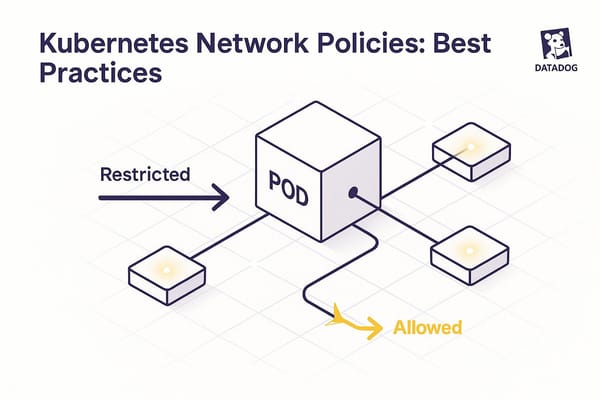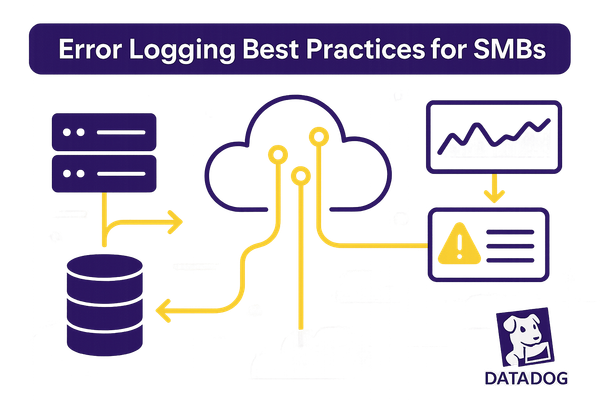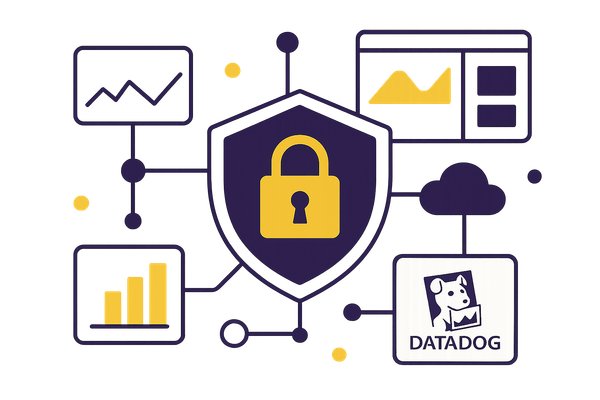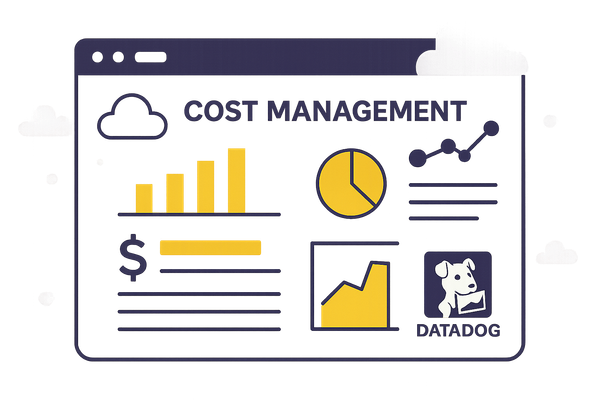Ultimate Guide to Tagging in Datadog
Effective tagging in Datadog enhances monitoring, streamlines alerts, and optimizes cost management for SMBs, driving efficiency in data organization.
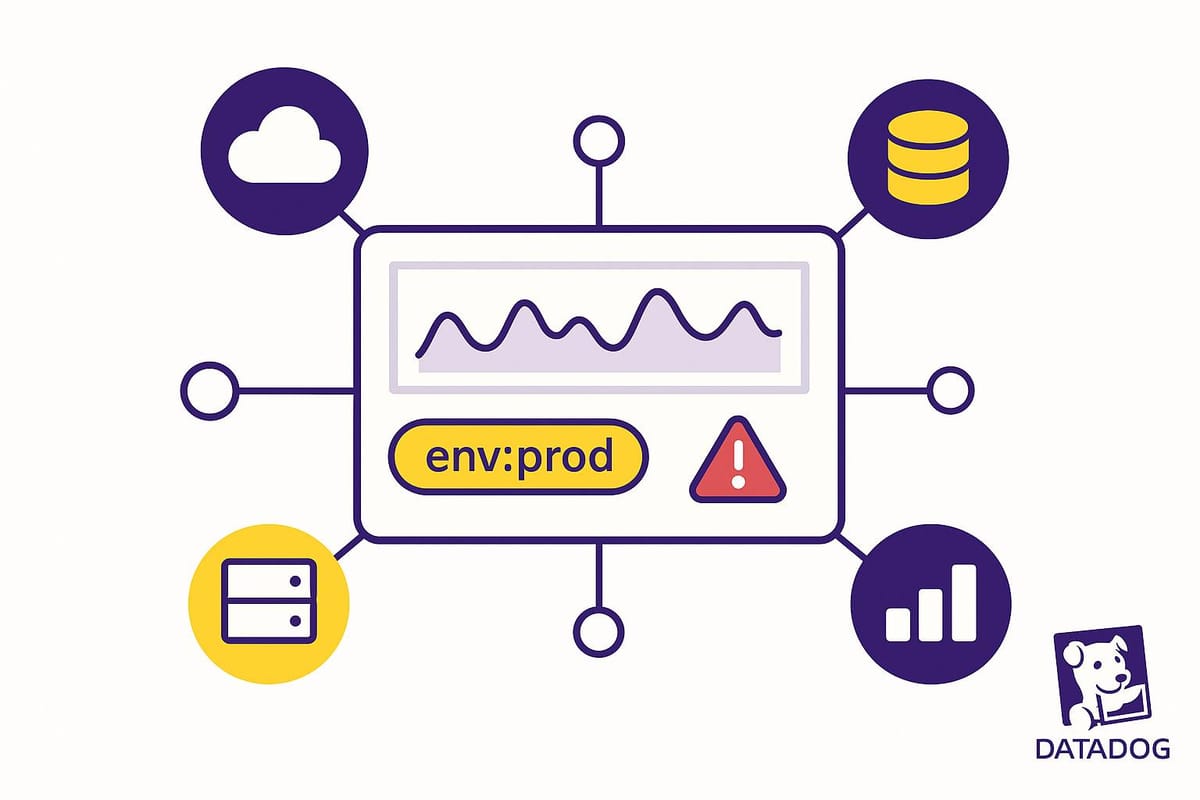
Tags in Datadog simplify monitoring by organizing data, improving troubleshooting, and enabling cost management for SMBs. Here's what you need to know:
- What are tags? Labels (like
env:prodorservice:web-app) that categorize metrics, logs, and resources for better organization. - Why do SMBs need them? Tags save time, reduce complexity, and help track costs by grouping data by environment, service, or team.
- How do tags work? They integrate across Datadog features - dashboards, alerts, and logs - making it easier to filter and correlate data.
- Best practices: Use consistent naming, avoid over-tagging, automate tagging, and regularly clean unused tags.
- Cost control: Tags help identify resource waste, allocate costs by department or project, and set budget alerts.
A strong tagging strategy makes monitoring, alerts, and cost tracking more efficient, especially as your infrastructure grows.
Datadog Tagging Best Practices | How to Organize, Monitor, and Scale Effectively
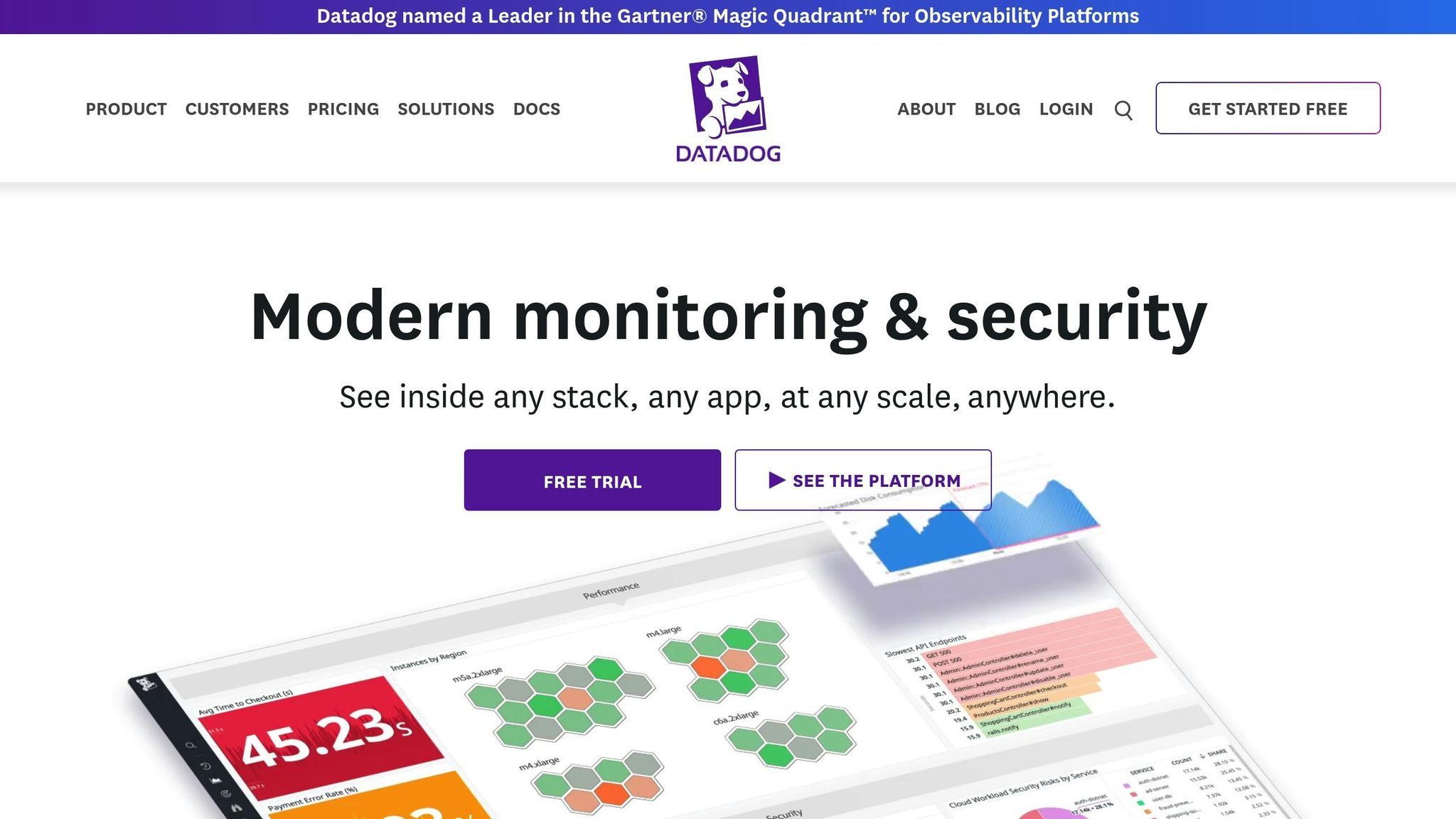
Tagging Best Practices for SMBs
Refining your tagging strategy is key to creating a system that's both efficient and scalable. With thoughtful planning and consistent execution, a solid tagging structure can save you significant time when troubleshooting.
Tag Syntax and Naming Rules
A unified tagging strategy lays the groundwork for effective monitoring. Datadog emphasizes three reserved tags - env, service, and version - to connect metrics, logs, and traces seamlessly across your telemetry data.
The env tag is crucial for distinguishing between environments. Use values like env:development, env:staging, and env:production to ensure alerts and dashboards display the right context.
Similarly, the service tag organizes data by application services, such as service:web-store or service:payment-processor. Using key:value pairs like component:database further enhances clarity and organization.
Common Tagging Mistakes to Avoid
Messy tagging can lead to slower troubleshooting and unreliable alerts. One frequent pitfall is overusing high-cardinality tags, such as timestamps, request IDs, or user IDs. These tags can inflate your custom metric bill because each unique tag combination adds to your metric count. For instance, 20 tags across 20 hosts could generate 400 custom metrics.
Manual tagging is another inefficiency. Instead, automate tagging through your cloud provider or Infrastructure-as-Code tools. Datadog can automatically pull these tags, ensuring uniformity without added effort.
Inconsistent naming conventions are also problematic. For example, if one team uses env:prod while another opts for environment:production, it complicates filtering and data correlation. Documenting and enforcing tagging standards can help avoid this issue.
Finally, regularly removing outdated or unused tags prevents technical debt and keeps your system streamlined.
Building a Scalable Tag Structure
A scalable tagging system should grow with your business, minimizing the need for constant restructuring. Start by creating a consistent tagging schema across all resources and services, making searches and filtering straightforward.
Design custom tags that align with key business needs. Tags like cost_center:engineering, owner:devops_team, and business_unit:engineering can simplify cost allocation and incident management.
For Application Performance Monitoring (APM), configure primary tags such as env, kube_cluster, availability-zone, and datacenter to group metrics efficiently without extra costs.
Datadog’s Service Catalog can centralize operational details, linking services to owners, team contacts, and runbooks. This is incredibly useful during incidents when quick access to information is critical.
Collaborative alerting is another smart move. Tags like team:frontend or contact:devops-alerts@company.com can route alerts directly to the right people via email or Slack.
To ensure consistency, enforce tag policies using Datadog's built-in tools for monitors, SLOs, and synthetic tests. For infrastructure, automate tagging policies through your cloud provider or Infrastructure-as-Code tools. These checks help maintain uniformity across your system.
Keep your tagging system balanced - granular enough to provide necessary context but simple enough to avoid unnecessary complexity or costs. By starting with essential tags that address your most pressing challenges, you can gradually expand your structure as your monitoring needs evolve. These practices ensure your tags work efficiently for monitoring, alerts, and cost management.
Using Tags for Monitoring, Alerts, and Cost Control
When used thoughtfully, tags can transform how you monitor systems, manage alerts, and control costs. Let’s dive into how tagging can streamline these processes.
Tags for Monitoring and Alerts
Tags turn Datadog monitoring into a focused tool, letting you zero in on the metrics that matter most. For instance, if your web application starts showing errors, filtering by service:web-app and env:production lets you quickly narrow down the problem to the critical components.
With targeted monitoring, tags make it easy to build dashboards tailored to specific needs. Imagine a dashboard filtered by team:frontend - it would only display metrics relevant to frontend developers. Similarly, a dashboard with cost_center:marketing could show infrastructure costs tied to marketing campaigns.
Alerting becomes more precise when tags are used effectively. By incorporating tags into monitor templates, you can create alerts that detect specific issues. For example, a CPU spike in a service tagged with env:production can automatically notify the appropriate team.
Tags also enable multi-dimensional filtering, which is especially useful during incident response. By combining tags like availability-zone:us-east-1a and instance-type:m5.large, you can quickly pinpoint the root cause of an issue.
For custom metrics, tagging adds extra depth. Business metrics, such as conversion rates, can include tags like campaign:summer-sale or region:west-coast. This allows you to analyze performance across different dimensions without needing separate metric streams.
Cost Management with Tags
Tags aren’t just for improving monitoring - they’re also a powerful tool for managing cloud costs. When applied consistently, tags provide clear insights into spending and help automate cost allocation.
With department-level tracking, tags like department:engineering, department:marketing, and department:sales make it easier to see how much each team is spending. Finance teams can create detailed reports, improving budgeting and accountability.
For project-based billing, tags such as project:mobile-app-rewrite or project:customer-portal allow you to monitor costs for specific initiatives. This visibility helps ensure projects stay on budget and provides valuable data for future planning.
Tags also support environment cost control by distinguishing between production, staging, and development environments. For example, tagging resources with env:staging can help you set alerts for unexpected costs in non-production environments. Many businesses discover that staging environments consume more resources than necessary simply because they’re left running 24/7.
When it comes to resource optimization, tags make it easier to identify underutilized resources. For example, filtering metrics by schedule:business-hours can reveal opportunities to implement automated scaling policies, reducing costs during off-peak hours.
Budget alerts become more actionable when scoped to specific tags. Instead of a single alert for your entire cloud bill, you can set up alerts for team:backend or env:production spending. This granular approach encourages teams to take responsibility for their costs.
SMB Tagging Examples
Here are some real-world examples of how tagging can improve operations:
- Incident isolation: Use tags like
service:web-frontend,env:production, andregion:us-westto pinpoint affected areas. Addingversion:2.1.4can help you determine if a recent deployment caused the issue. - Capacity planning: Analyze historical data tagged with
instance-type:m5.xlargeandworkload:batch-processingto identify the right instance sizes for different tasks, avoiding over-provisioning. - Security auditing: Tags like
compliance:pci-dssordata-classification:sensitivemake it easier to track and verify that resources handling sensitive data meet security standards. - Team handoffs: Tags like
primary-owner:backend-teamandsecondary-contact:devops@company.comclarify responsibilities, making incidents and maintenance smoother to manage. - Resource lifecycle management: Tags such as
created-by:john.smith,purpose:load-testing, andexpires:2025-12-31help identify temporary resources. Automated scripts can clean up expired resources or alert their owners. - Performance benchmarking: Compare similar resources using tags like
workload-type:web-serverandtraffic-pattern:steadyto establish performance baselines and spot anomalies.
Advanced Tagging Methods for Growing SMBs
As your business grows, relying on manual tagging becomes impractical. Advanced tagging methods can streamline the process, ensuring consistency while reducing errors.
Automated Tag Management
Using Infrastructure as Code (IaC) tools like Terraform or CloudFormation can simplify tagging. With IaC, you define tags once, and they’re automatically applied during resource provisioning. For instance, when launching an EC2 instance, tags such as env:production, team:backend, and cost-center:engineering can be assigned automatically. This approach not only ensures uniformity but also sets the stage for implementing more flexible tagging strategies.
Dynamic Tags and Process Tag Rules
Dynamic tags adjust automatically as your infrastructure evolves. For example, when new AWS instances are created, they can immediately inherit tags like availability-zone:us-east-1a and instance-type:m5.large without requiring manual input. Similarly, in Kubernetes environments, tools like Datadog can assign tags such as pod-name, namespace, and deployment as pods scale, ensuring that monitoring remains accurate and up-to-date.
Process Tag Rules take this a step further by generating tags from command-line parameters. For instance, if your application is deployed with arguments like --environment=staging and --region=west, Datadog can automatically create tags such as environment:staging and region:west for its metrics. Additionally, tag variables in alerts can enhance notifications by dynamically including relevant details. An alert like "High CPU usage on {{host.name}} in {{host.availability-zone}} for {{host.service}}" provides instant context, simplifying troubleshooting efforts.
Conclusion: Scaling with Datadog for SMBs
Key Points on Datadog Tagging
Tagging plays a crucial role in improving monitoring and management for small and medium-sized businesses (SMBs). Here are some highlights:
- Automatic tag collection from cloud providers lays a solid foundation right away.
- Custom tags configured through the Datadog Agent add detailed context to your data.
- Environment tags like
env:production, paired with service ownership, create a well-rounded monitoring framework. - Tag-driven cost management becomes essential as infrastructure scales.
- Dynamic tag-based alerts ensure accurate notifications, cutting down response times.
These practices provide the tools needed to support steady growth for SMBs.
How Tags Support SMB Growth
Structured tagging systems are the backbone of scalable operations. For instance, service ownership tags tied to distribution emails or Slack channels ensure automatic notifications and clear accountability - essential for managing rapid expansion without unnecessary confusion.
Tags like business_unit:internal-processing or cost_center:internal-processing-01 offer multi-dimensional insights, making it easier to pinpoint resource-heavy services, identify teams in need of support, and prioritize infrastructure investments where they’ll have the most impact.
A unified tagging approach across metrics, traces, and logs creates a shared framework for data analysis. This consistency fosters better communication and enables informed, data-driven decisions.
Next Steps with Datadog
Start with auto-collected tags, then expand by adding custom tags tailored to your business needs. Focus on key areas like environment, location, service, and ownership to ensure your monitoring evolves alongside your infrastructure.
As monitoring complexities grow, a well-thought-out tagging strategy becomes even more valuable. For more tips and advanced strategies designed specifically for SMBs, check out Scaling with Datadog for SMBs. This resource offers practical advice to help you make the most of Datadog while keeping operations efficient.
FAQs
How can I maintain an effective tagging strategy as my SMB grows?
To keep your tagging strategy effective as your SMB grows, aim for a clear and centralized system. Stick to straightforward naming conventions and ensure your documentation is always current. This helps keep everyone on the same page. Regularly revisiting and fine-tuning your tags can prevent unnecessary duplication and keep them relevant.
You might also want to explore dynamic and automated tagging tools to handle changes in your infrastructure more smoothly. Conducting routine audits can help spot any gaps, making sure your tags remain useful for tracking and organizing your resources.
How can I ensure a consistent tagging strategy across my cloud infrastructure?
To keep your tagging strategy consistent, automated tools can be a game-changer. Solutions like Terraform or CloudFormation, which follow the infrastructure-as-code approach, make it easier to automate tag deployment and maintain uniformity across your resources.
It's also crucial to set up a well-defined tagging policy with standardized key-value pairs. This not only simplifies management but also ensures everyone in your organization is on the same page. Securing leadership buy-in and incorporating governance practices can further reinforce these standards. By combining automation with clear policies, you can create a tagging system that stays dependable and scales effortlessly as your infrastructure expands.
How do tags in Datadog help SMBs manage and lower their cloud costs?
Tags in Datadog offer small and medium-sized businesses a practical way to manage and trim cloud costs. By categorizing resources based on factors like components, services, environments, or teams, tags provide a clear view of where funds are being allocated. This transparency makes it easier to pinpoint cost drivers and spot areas where spending can be reduced.
Beyond tracking expenses, tags allow for in-depth cost analysis and forecasting. This helps businesses make informed decisions about their cloud budgets. With the ability to group and filter resources more effectively, teams can focus their investments on what truly supports their goals.

